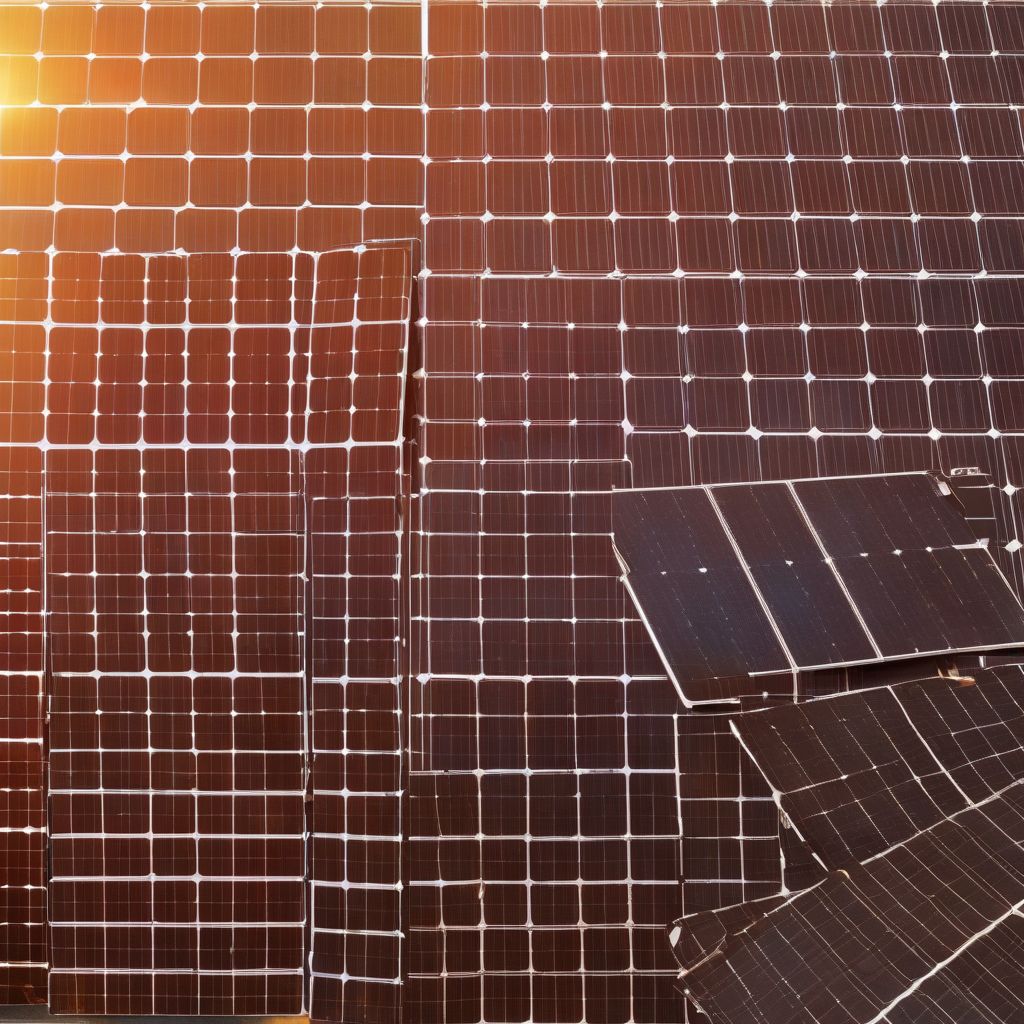Imagine harnessing the sun’s boundless energy to power your home, reducing your carbon footprint, and saving money on electricity bills. Solar panels make this dream a reality, but with different types available, choosing the right one can feel overwhelming. This article dives deep into the key differences between monocrystalline and polycrystalline solar panels, empowering you to make an informed decision for your solar journey.
Understanding the Basics: How Solar Panels Work
Before we delve into the specifics of each panel type, let’s briefly review how solar panels work. Solar panels, also known as photovoltaic (PV) panels, are made up of numerous solar cells. These cells are composed of silicon, a semiconductor material. When sunlight hits the silicon, it excites the electrons, creating a flow of direct current (DC) electricity. This DC electricity is then converted into alternating current (AC) electricity, the type used in our homes, by an inverter.
Monocrystalline Solar Panels: The Premium Choice
Monocrystalline panels are crafted from a single, high-purity silicon crystal. This gives them a distinct uniform black appearance. Think of it like a perfectly formed diamond – strong, pure, and efficient.
Advantages of Monocrystalline Panels
- Higher Efficiency: Monocrystalline panels boast the highest efficiency rates among commercially available solar panels, typically ranging from 18% to 22%. This means they convert a larger percentage of sunlight into electricity, generating more power in a given space. “Think of it like squeezing more juice from every sunbeam,” says renowned solar energy expert, Dr. Anya Sharma, author of “The Solar Revolution.”
- Space Efficiency: Because of their higher efficiency, monocrystalline panels require less space to generate the same amount of power compared to polycrystalline panels. This makes them ideal for smaller roofs or limited spaces.
- Longer Lifespan: Monocrystalline panels are known for their durability and longevity, often lasting 25 years or more.
- Better Performance in Low Light: While all solar panels perform best in direct sunlight, monocrystalline panels tend to perform slightly better in low-light conditions, such as cloudy days or shaded areas.
Disadvantages of Monocrystalline Panels
- Higher Cost: The superior performance and longevity of monocrystalline panels come at a price. They are generally more expensive than polycrystalline panels.
- Temperature Sensitivity: Monocrystalline panels can be slightly more sensitive to high temperatures, meaning their efficiency can decrease slightly on extremely hot days.
Polycrystalline Solar Panels: The Budget-Friendly Option
Polycrystalline panels are made from multiple silicon crystals melted together. This gives them a characteristic blue, speckled appearance.
Advantages of Polycrystalline Panels
- Lower Cost: Polycrystalline panels are generally more affordable than monocrystalline panels, making them a budget-friendly option for homeowners.
- Less Waste During Manufacturing: The manufacturing process for polycrystalline panels produces less silicon waste than monocrystalline panel production, making them a slightly more environmentally friendly option in this regard.
Disadvantages of Polycrystalline Panels
- Lower Efficiency: Polycrystalline panels have lower efficiency rates than monocrystalline panels, typically ranging from 15% to 17%. This means they require more space to generate the same amount of power.
- Shorter Lifespan: While still durable, polycrystalline panels typically have a slightly shorter lifespan than monocrystalline panels.
- Lower Performance in Low Light: Polycrystalline panels are more affected by low-light conditions compared to monocrystalline panels.
Which Panel is Right for You?
The choice between monocrystalline and polycrystalline panels depends on your individual needs and priorities.
- Budget: If budget is a primary concern, polycrystalline panels offer a more affordable entry point into solar energy.
- Space: If you have limited roof space or want to maximize energy production in a smaller area, monocrystalline panels are the better choice.
- Aesthetics: Some homeowners prefer the sleek black appearance of monocrystalline panels, while others don’t mind the blue, speckled look of polycrystalline panels.
- Long-Term Investment: If you’re looking for the highest long-term energy output and longevity, monocrystalline panels are a worthwhile investment.
 Monocrystalline vs. Polycrystalline Solar Panels
Monocrystalline vs. Polycrystalline Solar Panels
Frequently Asked Questions
What is the lifespan of monocrystalline vs. polycrystalline panels?
Monocrystalline panels typically last 25 years or more, while polycrystalline panels generally have a slightly shorter lifespan.
Are monocrystalline panels worth the extra cost?
If space is limited or you prioritize maximum energy output and longevity, the higher efficiency of monocrystalline panels often justifies the higher upfront cost.
Which type of panel performs better in hot climates?
While both types can be affected by high temperatures, polycrystalline panels generally handle heat slightly better than monocrystalline panels.
Conclusion: Making the Sunny Choice
Choosing the right solar panel is a significant step towards a greener future. By understanding the differences between monocrystalline and polycrystalline panels, you can confidently select the best option for your home, budget, and energy goals. Whether you prioritize efficiency, affordability, or aesthetics, harnessing the power of the sun is an investment that pays dividends for years to come. Share your thoughts and experiences with solar panels in the comments below! Let’s work together to build a brighter, more sustainable world.



